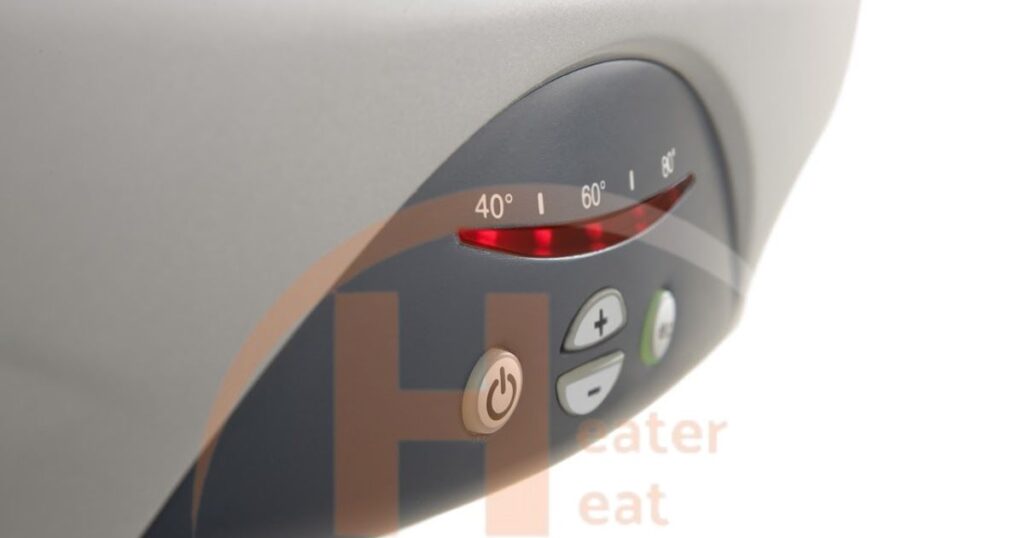An electric water heater on-off switch is a simple control mechanism that allows users to turn their electric water heaters on or off. It serves as a convenient way to manage energy consumption and ensures that the water heater operates only when needed, contributing to both energy efficiency and cost savings.
Picture a sleek on-off switch at your fingertips, granting you the power to heat water precisely when necessary. Ever found yourself torn between the comfort of a warm shower and the guilt of leaving your electric water heater running? It’s not just about comfort; it’s about putting control back into your hands and making a conscious choice for efficiency.
The electric water heater on-off switch is a pivotal component in modern homes. By allowing users to activate or deactivate the heating element at will, it promotes energy conservation and reduces standby energy losses. This simple yet effective feature empowers homeowners to customize their water heating schedule, aligning comfort with sustainability.
Understanding Electric Water Heaters

Electric water heaters are essential appliances in modern households, providing a convenient and efficient way to access hot water for various daily tasks. These devices operate on the principle of converting electrical energy into heat, raising the temperature of the water stored in a tank.
The basic components of an electric water heater include a heating element, thermostat, pressure relief valve, and the water tank itself. Understanding how these components work together is crucial for homeowners to maintain and troubleshoot their electric water heaters effectively.
Basic Components of an Electric Water Heater
The heating element, often made of durable materials like copper or stainless steel, is responsible for warming the water inside the tank. Connected to a thermostat, this element regulates the temperature, ensuring it remains within the desired range. A pressure relief valve safeguards the system from excessive pressure, preventing potential damage.
The tank, typically insulated to minimize heat loss, stores the heated water until needed. Familiarizing oneself with these components empowers homeowners to recognize and address issues promptly, ensuring their electric water heaters function optimally.
Functionality and Heating Process
Electric water heaters operate by using the heating element to raise the temperature of the water stored in the tank. When the thermostat detects that the water has cooled below the set temperature, it activates the heating element. The element then generates heat, warming the water until it reaches the desired temperature.
Once the set temperature is achieved, the thermostat signals the heating element to turn off, conserving energy until the water cools again. This cyclical process ensures a steady supply of hot water for various household needs, without unnecessarily consuming electricity used by electric heater.
Typical locations of On-Off Switches in Electric water heaters
The on-off switch for an electric water heater is typically located near the appliance or on the circuit breaker panel. This switch allows users to manually control the heater’s operation, enabling them to turn it on when hot water is needed and off during periods of non-use, contributing to energy efficiency.
Users need to familiarize themselves with the location of this switch to facilitate routine maintenance, such as draining the tank or troubleshooting issues. Understanding the on-off switch’s role in the electric water heater system empowers homeowners to manage their energy consumption effectively and ensure the longevity of the appliance.
Purpose of the On-Off Switch

The primary purpose of the on-off switch in an electric water heater is to regulate the appliance’s heating function. This switch serves as a control mechanism that allows users to turn the heating element on or off according to their needs. When the switch is turned on, electricity flows to the heating element, which then heats the water inside the tank.
Conversely, turning the switch off interrupts the flow of electricity, halting the heating process. This simple yet crucial function provides users with the flexibility to heat water only when necessary, contributing to energy efficiency and cost savings.
Controlling the Heating Element
The on-off switch plays a pivotal role in controlling the heating element within an electric water heater. The heating element, typically made of materials like copper or stainless steel, is responsible for converting electrical energy into heat. When the on-off switch is activated, it completes the circuit, allowing current to pass through the heating element.
By toggling the on-off switch, users have direct control over the heating process, enabling them to manage energy consumption and prevent unnecessary heating. This level of control not only ensures a steady supply of hot water but also contributes to extending the lifespan of the heating element by preventing overheating and unnecessary wear and tear.
Energy Conservation and Cost-Effectiveness
The on-off switch in an electric water heater plays a crucial role in promoting energy conservation and cost-effectiveness. By allowing users to turn off the heating element when hot water is not required, the switch helps reduce energy consumption. This not only lowers utility bills but also contributes to environmental sustainability by minimizing overall energy usage.
The ability to control the heating element directly aligns with cost-effective practices, as users can optimize their energy usage based on their specific needs. In this way, the on-off switch empowers users to make conscious decisions about when to utilize the water heater, striking a balance between comfort and resource efficiency.
Safety Considerations
Safety is a paramount concern when it comes to electric water heaters, and the on-off switch plays a vital role in addressing these concerns. When the switch is turned off, the flow of electricity to the heating element is halted, reducing the risk of electrical malfunctions or accidents.
This feature ensures that the heating element does not operate when it is not needed, minimizing the chances of overheating or potential electrical hazards. The on-off switch also serves as a convenient means of shutting down the entire water heating system in case of maintenance or emergencies.
Types of On-Off Switches

Electric water heaters come equipped with various types of on-off switches, providing users with different options to control their devices. One common category is manual switches, which are the traditional and straightforward toggles or buttons used to turn the heater on or off.
These switches are typically found on the heater itself or a nearby wall panel. Manual switches are user-friendly and reliable, making them a popular choice for those who prefer a simple and direct way to manage their water heater’s operation.
| Switch Type | Description | Example |
| Toggle Switch | A lever that can be flipped up or down | Light switch |
| Slide Switch | A switch with a sliding lever | Electronic devices |
| Key Switch | Requires a key to turn on or off | Security systems |
| Foot Switch | Activated by foot pressure | Pedal for machinery |
| Limit Switch | Activated by a physical limit or contact | Elevator limit switch |
Manual Switches
Manual switches are a fundamental type of on-off switch for electric water heaters. These switches come in different forms, such as a toggle switch or a push-button, and are usually located on the water heater unit or a control panel. Users can physically engage or disengage the switch to control the heating element.
Manual switches are known for their durability and simplicity, making them a reliable choice for many homeowners. Users need to ensure that the manual switch is in the correct position to avoid unnecessary energy consumption and to guarantee that hot water is readily available when needed.
Digital or Electronic Switches
In contrast to manual switches, some modern electric water heaters come equipped with digital or electronic switches. These switches often feature touch panels or buttons that provide more advanced and precise control over the heater’s functions. Digital switches allow users to set specific temperatures and other customizable settings for optimal energy efficiency.
Many electronic switches offer digital displays, providing real-time information about the water heater’s status. While digital switches may offer more sophisticated control, users should be familiar with the specific functions and programming options to make the most of these advanced features.
Do Electric Water Heaters Need a Disconnect?

Electric water heaters require a disconnect for safety and maintenance purposes. This disconnect serves as a means to completely cut off the electrical power supply to the water heater, ensuring the safety of individuals working on the unit.
It also allows for convenient isolation of the water heater during maintenance or repair activities. The presence of a disconnect is crucial as it helps prevent electrical shocks and ensures a secure environment for both homeowners and service professionals.
Electrical Disconnect
An electrical disconnect for an electric water heater is essentially a switch or a breaker that interrupts the flow of electricity to the unit. This disconnect is typically located near the water heater and provides a quick and efficient way to cut off power when needed.
The disconnect can be in the form of a dedicated switch or a circuit breaker in the electrical panel. Ensuring the presence and functionality of this disconnect is essential for the safe operation and maintenance of electric water heaters.
Devices used as an Electrical Disconnect for a Water Heater
Various devices can serve as an electrical disconnect for a water heater. The most common options include a dedicated switch, a circuit breaker, or a disconnect box. A dedicated switch is a simple on/off device installed specifically for the water heater. A circuit breaker, on the other hand, is part of the electrical panel and can be switched off to cut power to the water heater.
A disconnect box may be installed near the water heater, providing a designated point to interrupt the electrical supply. The choice of device often depends on the electrical system’s configuration and local building codes, but all options aim to provide a reliable means of disconnecting power for safety and maintenance.
Do Gas Water Heaters Require an Electrical Disconnect?
While gas water heaters don’t rely on electricity to heat water, they often have electrical components, such as a thermostat or an electronic ignition system. These components are usually low voltage and don’t require a dedicated electrical disconnect.
A standard gas shut-off valve is sufficient to isolate a gas water heater from its energy source. Although gas water heaters may not need an electrical disconnect, it’s important to follow manufacturer guidelines and local codes to ensure the safe operation and maintenance of these appliances.
Turn on the Electric Water Heater in RV

Turning on your electric water heater in your RV is a simple process. First, ensure your RV is connected to a power source or has a functioning generator. Locate the control panel, often found inside the RV. On the control panel, look for the switch specifically labeled as the water heater switch.
It’s typically marked with an icon representing a water heater. Once you’ve identified the switch, flip it to the “On” position. Depending on the model of your RV water heater, it may take a bit of time for the water to reach the desired temperature. Be patient and allow the system to work.
Where is the RV Water Heater Switch?
Finding the RV water heater switch is crucial for efficiently managing your water heating system. In most RVs, the water heater switch is part of the control panel, usually located near the entrance or in the kitchen area. It might be labeled clearly as “Water Heater” or use an icon representing a water heater.
If you’re having trouble locating it, consult your RV’s user manual or look for any additional labels or markings on the control panel. Some RV water heaters also have an external switch near the water heater itself.
RV Water Heater Switch On or Off
Understanding when to switch your RV water heater on or off is essential for conserving energy and ensuring a steady supply of hot water. When you’re ready to use hot water, turn the switch to the “On” position. Remember to turn it off when you’re done to avoid unnecessary energy consumption.
If you plan to park your RV for an extended period without using hot water, consider turning the water heater switch off to save power. Always check the water heater’s status before traveling to ensure it’s off, preventing any potential accidents. Maintaining a conscious approach to using the RV water heater switch will contribute to a more efficient and sustainable RV experience.
RV Water Heater Switch not working
Encountering issues with your RV water heater switch can be frustrating, but there are steps to troubleshoot the problem. First, verify that your RV is properly connected to a power source, as insufficient power can impact the switch’s functionality. If the switch still doesn’t work, inspect for any visible damage or loose connections.
Consult your RV’s manual for specific troubleshooting steps and contact the manufacturer’s customer support if needed. Check the circuit breaker to ensure it hasn’t tripped. If the issue persists, it may require professional assistance. Avoid attempting extensive repairs without proper knowledge to prevent further damage and ensure the safety of your RV’s electrical system.
Energy Efficiency and Conservation
Electric water heaters play a crucial role in households, providing hot water for various purposes. Understanding and effectively utilizing the on-off switch can significantly contribute to energy efficiency and conservation. When the water heater is not in use, turning off the switch prevents unnecessary energy consumption, reducing electricity bills and environmental impact.
Energy efficiency is not only cost-effective but also aligns with sustainable practices. Users need to be mindful of their energy usage and leverage the on-off switch as a simple yet impactful tool for conserving resources.
Tips for Maximizing Energy Efficiency
To maximize energy efficiency when using the electric water heater on-off switch, consider adopting some practical tips. Firstly, schedule heating times to align with actual water usage, minimizing idle periods. Insulating the water heater and its pipes helps retain heat, reducing the frequency of heating cycles.
Regularly checking for leaks and fixing them promptly ensures that the system operates at optimal efficiency. Educating users about the on-off switch’s functionality and encouraging responsible usage can lead to collective efforts in energy conservation, benefitting both households and the environment.
Environmental benefits of using the Switch Effectively
Effectively utilizing the electric water heater on-off switch carries environmental benefits beyond personal savings. By minimizing energy consumption, users contribute to the overall reduction of greenhouse gas emissions associated with electricity generation. This not only aids in combating climate change but also promotes a sustainable and eco-friendly lifestyle.
As society increasingly emphasizes environmental responsibility, small actions, such as using the on-off switch thoughtfully, accumulate to make a significant positive impact. Recognizing the broader environmental implications of this switch empowers individuals to make conscious choices that align with the global effort to create a more sustainable future.
Final Thoughts
The electric water heater on-off switch plays a crucial role in the efficiency and safety of your water heating system. This seemingly simple device empowers users with the ability to control the heating process, conserving energy and promoting cost-effectiveness.
By utilizing the on-off switch, users can tailor their hot water usage to specific needs, preventing unnecessary energy consumption during periods of non-use. This not only reduces utility bills but also contributes to a more environmentally friendly household.
The on-off switch serves as a safety feature, allowing users to quickly disconnect power in case of malfunctions or emergencies. This immediate control adds an extra layer of protection, safeguarding both the appliance and the home.
The electric water heater on-off switch embodies the essence of user control and responsibility. Its simplicity belies its significance, offering a practical tool for optimizing energy usage, reducing costs, and ensuring the safety of your home’s hot water system. As we strive for more sustainable and efficient living, understanding and utilizing the capabilities of the on-off switch is a small yet impactful step toward achieving these goals.
Frequently Asked Questions
Can I install an on-off switch for my electric water heater?
No, electric water heaters typically don’t have on-off switches; they are controlled by a thermostat.
How can I turn off my electric water heater when not in use?
Locate the circuit breaker labeled “water heater” in your electrical panel and switch it off.
Is it safe to turn off my electric water heater frequently?
It’s generally safe, but frequent on-off cycles can affect efficiency and may not be necessary for most users.
Can I use a smart switch to control my electric water heater remotely?
Smart switches are available, but consult a professional to ensure compatibility and proper installation.
Why doesn’t my electric water heater have a visible on-off switch?
Electric water heaters are designed to operate continuously, and the thermostat regulates heating cycles without the need for a manual switch.

Mark Edward, with 6 years of expertise in Electric Heaters, is the author at heaterheat.com. His in-depth knowledge provides valuable insights into efficient heating solutions, making him a trusted resource.











